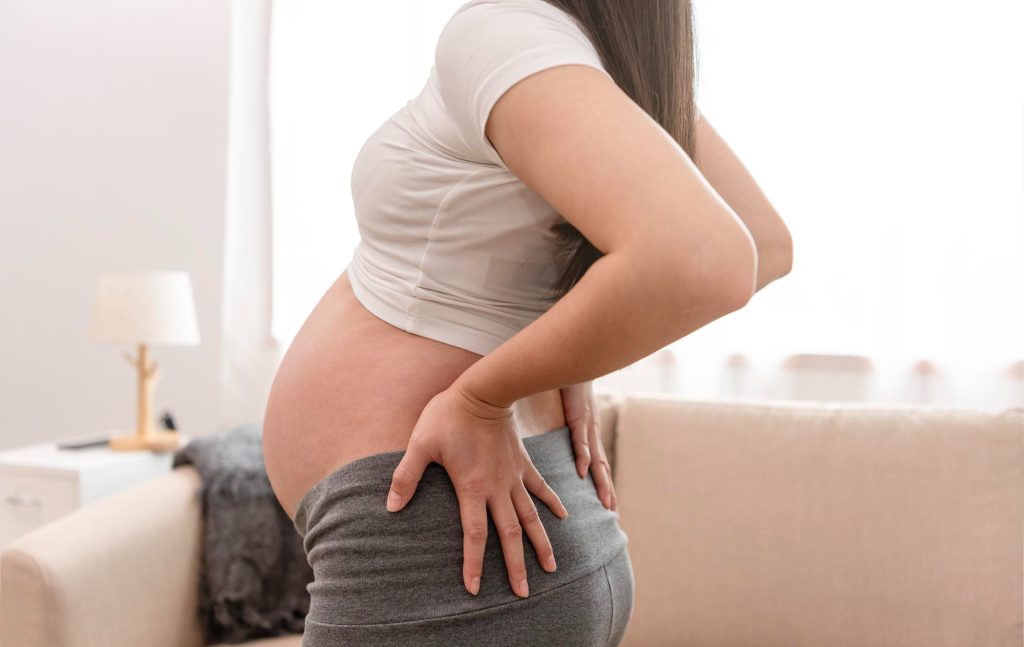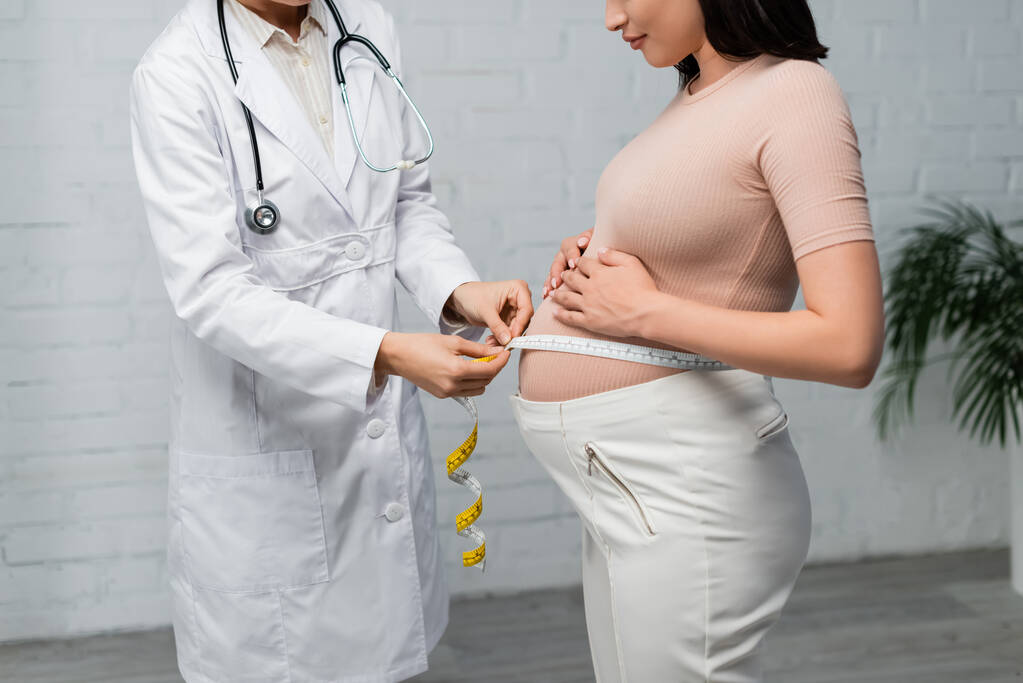Discover the causes behind pelvic girdle pain during pregnancy and learn how to alleviate discomfort.
What Causes Pelvic Girdle Pain During Pregnancy?
Do you find yourself wincing in discomfort every time you take a step during your pregnancy? If so, you might be experiencing the dreaded pelvic girdle pain. But fear not, mama-to-be! In this article, we will delve into the fascinating world of pelvic girdle pain during pregnancy and explore the mysteries behind its causes. So sit back, relax, and let’s uncover the truth!

Understanding Pelvic Girdle Pain
Before we dive headfirst into the causes of pelvic girdle pain, let’s take a moment to understand what it actually is. Pelvic girdle pain, also known as PGP, is a common discomfort experienced by many expectant mothers. It is characterized by pain in the pelvic area, including the lower back, hips, and groin.
Definition of Pelvic Girdle Pain
So what exactly is this perplexing pain? Pelvic girdle pain refers to the discomfort and instability felt in the pelvic region during pregnancy. It can range from a mild annoyance to a throbbing agony that affects your daily activities. Fortunately, it is a temporary condition that usually subsides after childbirth.
The Anatomy of the Pelvic Girdle
Now that we have a basic understanding of what pelvic girdle pain entails, let’s take a peek into the intricate world of the pelvic girdle. The pelvic girdle is made up of a network of bones, ligaments, and muscles that support and connect the lower spine, hips, and pelvis. During pregnancy, these structures undergo significant changes to accommodate the growing baby, and it is these transformations that can lead to pelvic girdle pain.
The pelvic girdle consists of several key components that work together to provide stability and mobility. The sacrum, a triangular bone at the base of the spine, forms the back of the pelvic girdle. It connects to the ilium, the largest and uppermost bone of the pelvis, on each side. The pubic bone, located at the front of the pelvis, completes the pelvic ring.
Within the pelvic girdle, there are also several important ligaments that help to support and stabilize the pelvis. The sacroiliac ligaments connect the sacrum to the ilium, while the pubic symphysis ligament connects the two halves of the pubic bone. These ligaments play a crucial role in maintaining the integrity of the pelvic girdle.
In addition to the bones and ligaments, the pelvic girdle is also home to a complex network of muscles. The gluteal muscles, located in the buttocks, help to stabilize the pelvis and provide power for movements such as walking and climbing stairs. The pelvic floor muscles, which form a hammock-like structure at the base of the pelvis, support the pelvic organs and play a key role in bladder and bowel control.
During pregnancy, hormonal changes cause the ligaments in the pelvic girdle to become more relaxed and stretchy. This is necessary to allow the pelvis to expand and accommodate the growing baby. However, the increased flexibility can also lead to instability and pain in the pelvic region.
As the baby grows, the weight and pressure on the pelvic girdle increase. This can further exacerbate the discomfort and pain experienced by expectant mothers. The combination of hormonal changes, ligament laxity, and increased pressure on the pelvic girdle can result in pelvic girdle pain.
It is important to note that pelvic girdle pain can vary in severity and location. Some women may experience pain primarily in the lower back, while others may feel it more in the hips or groin. The pain may be constant or intermittent, and it can worsen with certain movements or activities.
While pelvic girdle pain is a common occurrence during pregnancy, it is not something that expectant mothers have to endure silently. There are various treatment options available, including physical therapy, exercises, and supportive devices, that can help alleviate the pain and improve mobility.
In conclusion, understanding the anatomy of the pelvic girdle and the changes it undergoes during pregnancy can provide valuable insights into the causes of pelvic girdle pain. By recognizing the complex interplay between bones, ligaments, and muscles, we can better appreciate the challenges faced by expectant mothers and work towards finding effective solutions to alleviate their discomfort.
The Role of Pregnancy in Pelvic Girdle Pain
Ah, pregnancy. A magical time filled with glowing skin, cute baby kicks, and, yes, the occasional discomfort. So how exactly does pregnancy contribute to pelvic girdle pain? Let’s explore two key factors: hormonal changes and physical alterations.
During pregnancy, your body undergoes a series of remarkable changes to accommodate the growing life inside you. These changes are orchestrated by a complex interplay of hormones, which can have both positive and negative effects on your body. One of the hormones involved in this game is relaxin. Relaxin works its magic by relaxing the ligaments and joints in your body, preparing them for childbirth. However, this relaxation can also lead to increased joint mobility and instability, putting strain on the pelvic girdle and causing pain.
But relaxin is not the only hormone at play. Estrogen, progesterone, and other hormones also surge during pregnancy, affecting various systems in your body. These hormonal changes can result in increased blood flow, swelling, and inflammation, which can further contribute to pelvic girdle pain. The intricate dance of hormones during pregnancy is a fascinating process, but it can sometimes lead to discomfort.
Hormonal Changes During Pregnancy
As if growing a tiny human inside you wasn’t enough of a challenge, your body also decides to play hormonal roulette during pregnancy. One of the hormones involved in this game is relaxin. Relaxin works its magic by relaxing the ligaments and joints in your body, preparing them for childbirth. However, it can also lead to increased joint mobility and instability, putting strain on the pelvic girdle and causing pain.
Aside from hormonal changes, the physical alterations that occur during pregnancy also play a significant role in pelvic girdle pain. As your baby bump expands, so does the pressure on your pelvic region. The weight of the growing fetus can throw off your balance and place additional stress on the pelvic joints and muscles. The added weight and pressure can cause discomfort and pain, especially as your pregnancy progresses.
Additionally, changes in your posture and the way you move due to the shift in your center of gravity can also contribute to pelvic girdle pain. As your belly grows, your body naturally adjusts to accommodate the extra weight. This adjustment can lead to changes in your gait and posture, which can put strain on the pelvic area. The combination of increased weight, altered posture, and changes in movement patterns can create a perfect storm for pelvic girdle pain.
Physical Changes and Their Impact
As your baby bump expands, so does the pressure on your pelvic region. This increased weight can throw off your balance and place additional stress on the pelvic joints and muscles. Additionally, changes in your posture and the way you move due to the shift in your center of gravity can also contribute to pelvic girdle pain. So, blame it on the baby, but remember that it’s all worth it in the end!
Despite the discomfort that pelvic girdle pain may bring, it is important to remember that it is a temporary condition that usually resolves after childbirth. There are various techniques and therapies available to help manage and alleviate the pain, such as physical therapy, exercises, and supportive devices. It is always advisable to consult with your healthcare provider to determine the best course of action for your specific situation.
Common Symptoms of Pelvic Girdle Pain
Now that we have a grasp on what causes pelvic girdle pain, let’s talk about the pesky symptoms that can accompany it. Recognizing these symptoms is the first step towards understanding and managing your discomfort.
Identifying Pelvic Girdle Pain
Do you feel a sharp, shooting pain in your lower back or hip area? Does walking or standing for long periods feel more like a torture session than a peaceful stroll? If you answered yes to any of these questions, you might be experiencing pelvic girdle pain. Other common symptoms include difficulty getting in and out of bed, stiffness and discomfort during activities, and a general feeling of instability in the pelvic region.
Severity and Duration of Symptoms
Pelvic girdle pain can vary greatly in intensity and duration from person to person. Some lucky mamas might experience only mild twinges, while others may be plagued by constant, debilitating pain. The duration of symptoms can also vary, with some women experiencing relief after giving birth and others requiring additional time for recovery. Remember, each pregnancy is unique, and so is your journey through pelvic girdle pain!
Risk Factors for Pelvic Girdle Pain in Pregnancy
While pelvic girdle pain can affect any pregnant woman, certain factors can increase your chances of experiencing this discomfort. Let’s explore a couple of these risk factors.
Pre-existing Conditions
If you have a history of pelvic injuries, lower back pain, or previous episodes of pelvic girdle pain, you may be more susceptible to experiencing it during pregnancy. These pre-existing conditions can exacerbate the discomfort and make your journey through pregnancy a little bumpier.
Lifestyle Factors
Living life in the fast lane might be exciting, but it can also increase your risk of pelvic girdle pain during pregnancy. Factors such as a sedentary lifestyle, excessive weight gain, poor posture, and high stress levels can all contribute to the development of pelvic girdle pain. So, take a moment to slow down, practice good self-care, and give your body the love and attention it deserves.
Diagnosis and Treatment of Pelvic Girdle Pain
If you suspect you may be dealing with pelvic girdle pain, it’s essential to seek a proper diagnosis from a healthcare professional. Let’s explore the diagnosis process and some treatment options that can help alleviate the discomfort.

Medical Examination and Diagnosis
Your healthcare provider will evaluate your symptoms, medical history, and perform a physical examination to pinpoint the source of your pelvic girdle pain. They may use diagnostic imaging tests, such as X-rays or MRIs, to rule out other potential causes. Once a diagnosis is made, you can move forward with appropriate treatment measures.
Treatment Options and Pain Management
Fortunately, there are several treatment options available to help manage pelvic girdle pain and make your pregnancy journey more comfortable. These may include physiotherapy exercises to strengthen your core and pelvic muscles, the use of support belts or braces to provide additional stability, and pain relief measures such as heat therapy or medication. Your healthcare provider will tailor a treatment plan to suit your specific needs, ensuring you receive the care and support you deserve.
So there you have it, mama-to-be! The causes of pelvic girdle pain during pregnancy are as multifaceted as the beauty of creating life itself. Remember, while pelvic girdle pain can be an unwelcome visitor on your journey to motherhood, it is a temporary one. With proper diagnosis, treatment, and a sprinkle of self-care, you can navigate through this discomfort and embrace the incredible miracle growing within you. Happy pregnancy, and may your pelvic girdle pain be but a distant memory!



